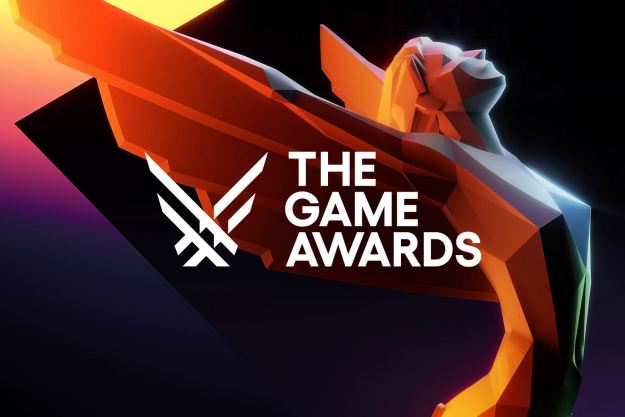With The Legend of Zelda: Tears of the Kingdom less than one month away, it’s as good a time as any to revisit Breath of the Wild. Maybe you still have a few shrines to clear out, or perhaps you never defeated Calamity Ganon (it’s OK, you can admit it). Now might be your last chance to finish that story before diving headfirst into Hyrule’s next chapter. Breath of the Wild isn’t the only Zelda game you’re going to want to finish before May 12, though; Hyrule Warriors: Age of Calamity is a must-play that needs to be on your prelaunch checklist.
Age of Calamity is a Dynasty Warriors-style action RPG that acts as a prequel to Breath of the Wild. Set before the Calamity, it tells the story of Link, Zelda, and the four champions trying to thwart Ganon’s plans to conquer Hyrule. It’s Zelda’s version of Rogue One, with its heroes trying to fight off a fate that players know is inevitable.
Well, sort of.
Despite gaining positive buzz at launch, Age of Calamity was a bit of a mixed bag for fans. Musou gameplay always tends to be a bit hit-and-miss with mainstream audiences, so it was no surprise that not everyone was on board with its hack-and-slash combat. Even more polarizing, though, was its story. Let’s just say that Age of Calamity takes a few liberties with the Zelda timeline, crafting more of an alternate history story than a true prequel. While that decision has led some to label it a “cop out,” that doesn’t mean you should skip it entirely. Age of Calamity includes some crucial lore and character development that you’ll want to dig into before starting Tears of the Kingdom.
More than a musou
While Age of Calamity’s narrative may not be “canon,” it still expands the world of Breath of the Wild in some crucial ways. History plays a major role in the latter game, with Link trying to piece together what happened before the Calamity. We flash back to some of those moments in unlockable memories, but we only get a few glimpses into the past by the end. Age of Calamity allows players to experience that era firsthand and spend more time with characters who we’d only gotten flashes of previously.
Most valuable here is the way Age of Calamity fleshes out Hyrule’s champions, the four heroes who are dead by the time Link awakens from his long slumber. When Breath of the Wild ended, I was dying to know more about characters like Revali and Daruk. Age of Calamity doesn’t just treat them as faceless hack-and-slash characters, but actually gives some insight into who they were before the Calamity. With full voice acting and high-quality cutscenes, the action RPG explores the real heroes that have been turned into folk legends a century later in the series’ timeline.

Breath of the Wild’s divine beasts get a similar treatment here. When that game begins, the hulking machines are a bit mysterious. Players are told that they were once important weapons that could be the key to taking down Ganon, but we never really see their power. Even in the finale, they feel more like glowing MacGuffins than war-winning machines.
Age of Calamity is an important missing link in that sense. A handful of missions let players actually pilot the beasts, using them to wipe out thousands upon thousands of enemies in the blink of an eye. They’re wildly fun musou action set pieces, delivering Zelda’s ultimate power fantasy, but they also retroactively add some stakes back into Breath of the Wild. Age of Calamity makes it clear that these aren’t just mobile dungeons to be conquered, but true weapons of mass destruction that shouldn’t be taken lightly.

Zelda has her moment
In its best moments, Age of Calamity excels at delivering sequences like that — ones that deepen my understanding of Breath of the Wild despite not perfectly aligning with its story. The best example of that comes from the way it handles the series’ titular character: Zelda herself. For decades, the princess has played second fiddle to Link as he heroically saves the day. Breath of the Wild presents a much richer version of the character, but she’s still largely out of the picture for the duration of the adventure.
In Age of Calamity, though, she’s the main character. The game tells an almost self-reflexive story about Zelda grappling with the fact that she’s always treated as a sidekick. She learns to awaken her true potential here, finally establishing why she’s so important to a series that’s borne her name for decades. That effective character journey completely recolored my view of the series and has me going into Tears of the Kingdom excited to see how she grows from here.
Though its hack-and-slash combat may not be for everyone, you’d be missing out if you decide to outright skip past Hyrule Warriors: Age of Calamity and go straight into Tears of the Kingdom. It may be an optional side story, but it’s a fulfilling spinoff that pays off a lot of Breath of the Wild’s lip service. Plus, what else are you going to do for the next grueling three weeks?
Editors' Recommendations
- You need to play this underrated zombie shooter before it leaves Xbox Game Pass
- You need to try PlayStation VR2’s most psychedelic game yet
- 2023 set an incredibly high bar for video game sequels
- Zelda: Tears of the Kingdom isn’t our Game of the Year, but it’s the strongest No. 2 ever
- The 10 best video games of 2023




